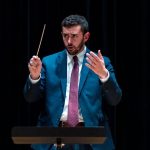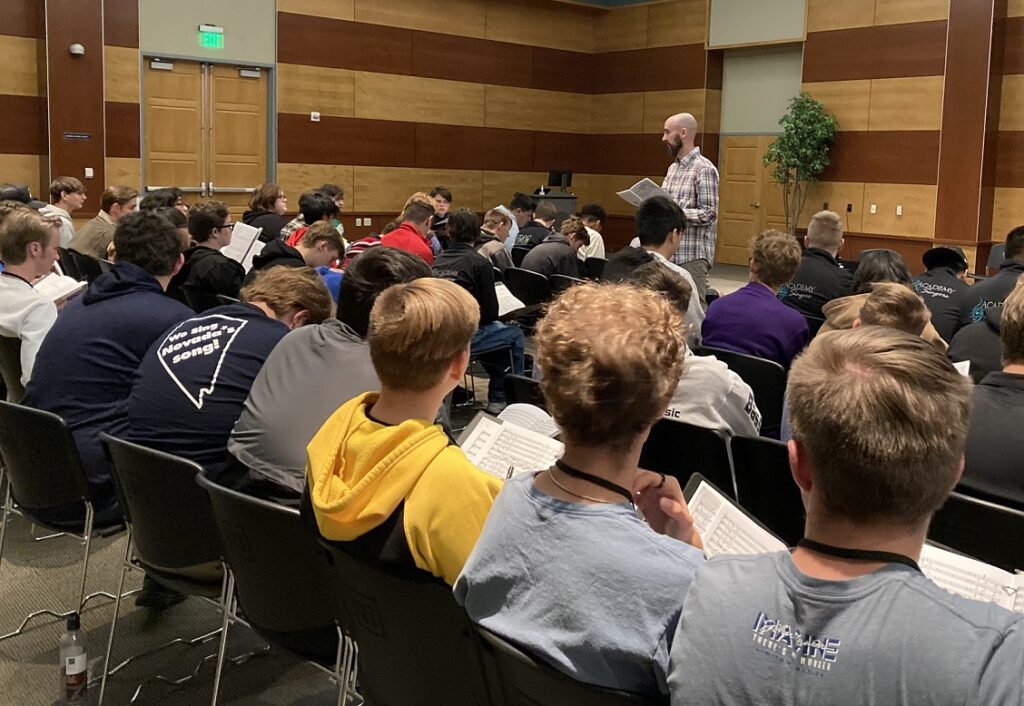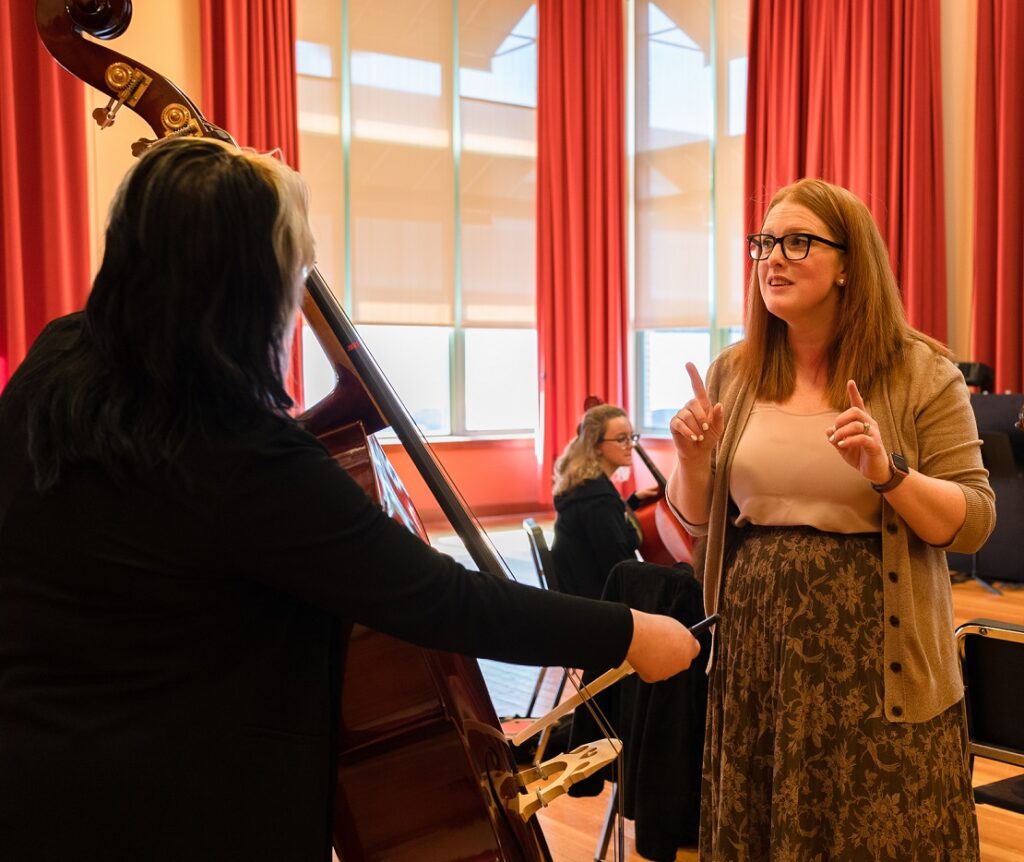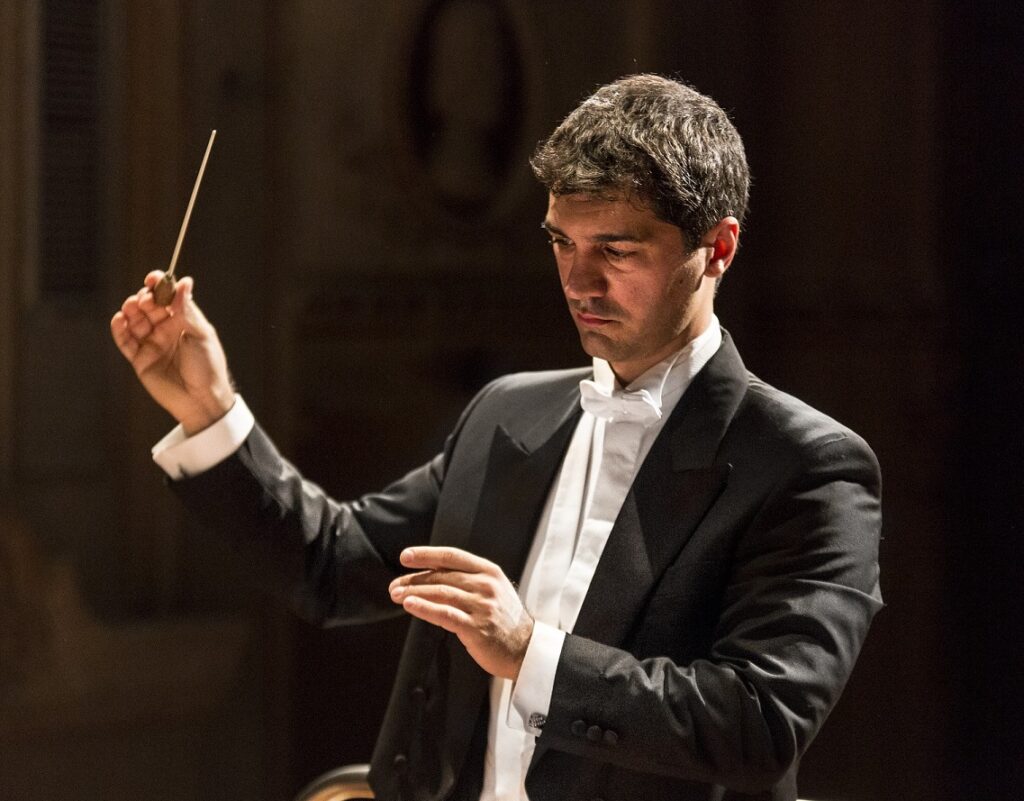Tagged Under:
8 Unconventional Rehearsal Tips
Try these tips to challenge your students to listen, react, communicate, perform and ultimately, to be musical!
“Now it’s starting to sound like music!” I often say this phrase to my students at Brunswick High School in Maine. They know what it means — that we have finally gone beyond the notes on the page and have really reached the heart and soul of the music.
What do we enjoy about music? For me, it’s the way music makes me feel. What do we tend to remember most from a performance? Is it the accuracy of the notes and rhythms played or the feeling of passion and energy?
I definitely do not recall any note- and rhythmic-perfect performances, but I surely remember a few performances where both the students and I felt something. That something is the stuff that lies in the musicality, which can be very difficult to teach. We all want our groups to sound musical, but how do you teach that? Why does this guy from Maine think he has the answers?
I don’t have all the answers — no one does. However, there are some unconventional things that I do that work for my groups. We all have a unique connection and relationship with our students and ensembles. My students enjoy the things that I do during rehearsals; your students might not. You may read some of my tips below and think I’m a cold, heartless director. And that might be true at times, but it’s all about delivery, folks. Please understand that my goal is to challenge my students to listen, react, communicate, perform — and ultimately, to be musical.
THE YAMAHA EDUCATOR NEWSLETTER: Join to receive a round-up of our latest articles and programs!
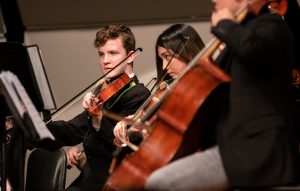
1. Start on the Musicality Immediately
Far too often, music educators stick to a rehearsal process that is based on a hierarchy of what we see as the most important aspects of a performance. Generally, that order begins with notes and rhythms and ends with things like phrasing and beyond that smaller (but perhaps more important) musical elements.
I encourage you to consider working on the things that make music sound like music, not just organized sound, much earlier. Things like articulation, dynamics, phrasing and emotion add character to a piece of music, and they are what make music exciting to listen to. It’s never too early to work on these things in rehearsal.
Notes and rhythms may need to be addressed, but oftentimes they work themselves out on their own. Focusing on musicality sends a message to the students that rehearsal is time to work on making music with one another, not to learn their individual parts.
2. Don’t Move on Until it’s Perfect
Really? It has to be perfect? If that were the case, then we would spend a whole concert cycle on one measure! Okay, I didn’t mean this literally, but this is the mentality I like to have: If something is not right, why move on?
You should move on only when you are satisfied with the result of the work you spent on that one entrance or that one phrase. The classic band director trope “one more time” might scare you away from going back and doing it again until you’re satisfied because you don’t want your kids to think you’re a liar. You know what? I lie multiple times during a rehearsal, but I don’t worry about it because I just get in my Ferrari and head back home to my mansion.
3. Save the Compliment
This may sound harsh, and it might stem from my inability to share my emotions through words. My students know that I like them and am proud of them even though I do not say these things often. They know I don’t, and I’ve told them I know I don’t.
I am in no way saying compliments are bad. What I am saying is that using them too much can send two messages: 1) Everything they are playing is right and 2) they deserve a compliment for simply playing (and don’t get me wrong, that alone is praiseworthy for some of my students).
If you’ve ever trained a dog, you know that you don’t always give it a treat unless your pet performs the correct task based on your command. Early on in training, your dog will perform a series of tasks until that treat is given as a way to figure out what worked. This same rationale can be applied to giving feedback to students. They will continue to change articulation, play rhythms wrong, etc. as a process of figuring it out, but don’t give them the treat (i.e., the compliment) until they have it right! If they get the treat too often, nothing they do will matter.
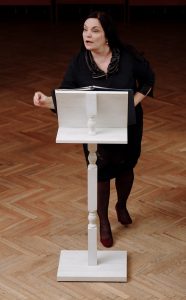
4. Step off the Podium
This is not a novel idea, but it’s worth repeating. Depending on the rehearsal, I may not step on the podium once. I will walk around with my score in hand and rehearse. Maybe I’ll visit the tubas in the last row or go sit in an empty seat next to the trumpets because we all know they’re talking. My students might go a week or two without seeing me actually conduct, but now they’re listening. They are responsible for the music. You’ve given them the tools, now it’s time for them to use those tools.

5. The Unconventional Gesture
I have a master’s degree in conducting. How often do I use that student debt — oops, I mean degree — when I don’t get the sound I’m looking for? Approximately -0% of the time — sorry, but I’m a band director, not a math teacher!
Don’t shy away from using some sort of ridiculous gesture to get the point across. You can probably trust your ensemble to keep playing. They do it all the time after you cut them off. Do something to show what you want, no matter how ridiculous — your students don’t need you to keep time. Don’t be afraid of looking silly, you work with kids who embarrass themselves constantly. You’ll be okay.
6. Let Students Make Decisions
This is something I admittedly struggle with. After all, we are the experts, right? What if a science teacher asked a teenager their opinion on the Earth being round or flat?
What I like to do is ask students their opinion on something I know is being done poorly and I want to fix it. Of course, I get conflicting opinions. But then we try it every way that the students suggest. Let’s play it short, let’s play it long, let’s add space between these notes, let’s have the notes touch, let’s play this phrase loud then soft. Then we decide what makes the most sense musically. And if they choose something offensively unmusical, revert back to just telling them you want it done your way.

7. Let Them Play
We have all read the same books, taken the same classes, listened to the same podcasts, seen the same presentations. Therefore, we all know the process of rehearsing going macro-micro-macro. That’s not new.
However, when we get to the micro phase, it can be easy to get hung up on the micro part and therefore play very short segments before stopping. Music is linear and needs context to make sense and be brought to life. So, let the students play longer portions of the music.
Yes, there will be times when it’s a total train wreck, and your students will look up (maybe for the first time ever!) to see if you will actually cut them off, and when they realize you won’t, beg for you to put them out of their misery. But a lot of the time, those parts that we want to rehearse will get better because the music had a chance to work itself out. That’s your opportunity to go back and adjust.
For example, maybe you’re performing a march. The first time you played, the tempo starts to pull apart between the winds and percussion, but on that repeat, you give a giant downbeat to show where you are, and it is tight and sounds like a new band. How would you know what to do if you had stopped sooner? Now you have the context to go back and say, “Let’s go back to the first strain and see if we can lock it in like we did on the repeat.”
8. And Keep Them Playing
This tip could go with #7 and be one large point, but I think 8 looks much better for a numbered list.
As I mentioned before, I’m not good at sharing my thoughts and feelings through words. Part of it may stem from the fear that I have of the list my students have of the many weird things that I have said. Yes, your students have one for you, too. Again, we’ve all heard it before: Kids want to play, they don’t want to hear you talk.
My experience as a conductor comes in handy because I’ve learned to communicate with gestures instead of words. During a concert you’re going to use gestures to get students to respond. Why not show them during rehearsal?
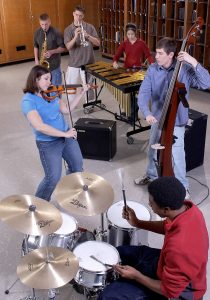
Challenge Yourself
I hope you didn’t make it this far just to see if my email is listed here for you to tell me how much you disagree with me. Honestly, I want you to disagree with me on some of this! I have discovered what works for me by reading and attending conferences. I don’t agree with everything I read or hear, and that’s what challenges me to be better.
If you liked something I wrote here, great — use it! If you didn’t like something I wrote, also great — go change it! My goal with this article wasn’t to give you answers, but rather to challenge you to be better.
I hope that you take something from this article that you can do or not do, try or not try, that can make your rehearsals and performances more musical.
You can send your comments to educators@yamaha.com.









